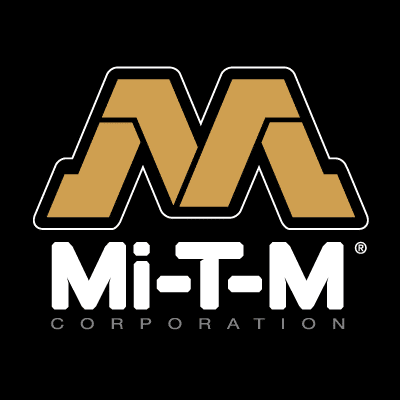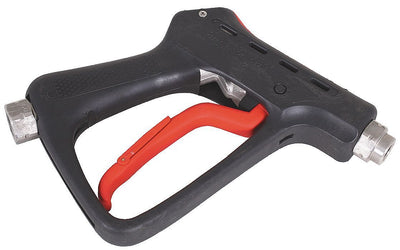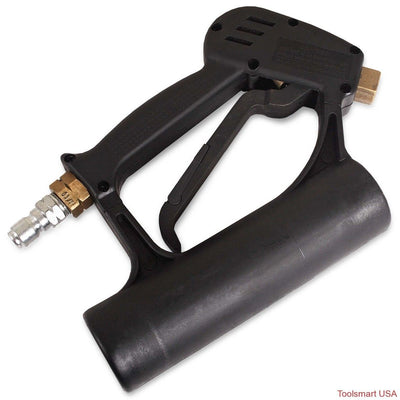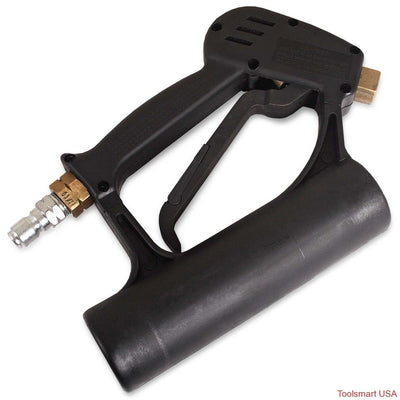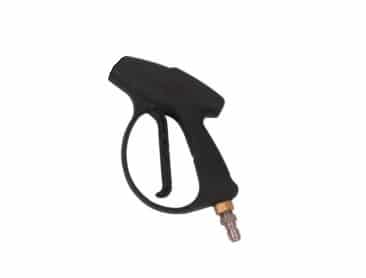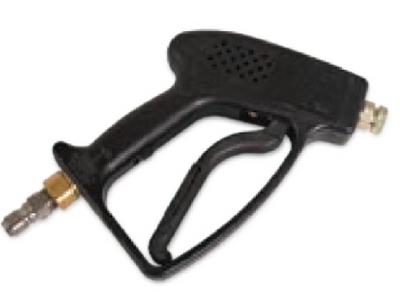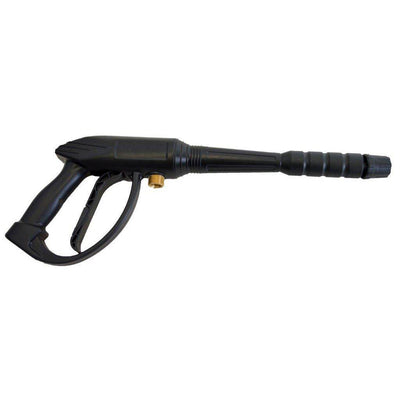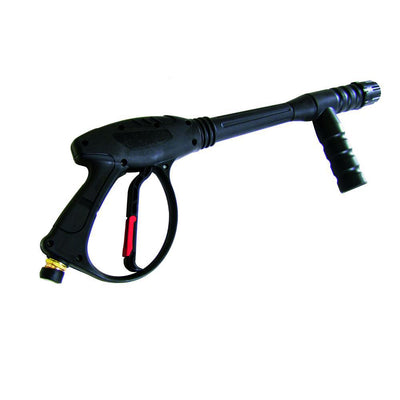HVLP versus Airless Paint Sprayers-A Complete Guide (and Video)
Whether you’re a paint contractor, woodworker, cabinet finisher, or manufacturer you may be considering whether airless or HVLP is the right type of equipment for you. This guide will cover what HVLP and airless paint sprayers are, how they work, the benefits and drawbacks of each, and which may be right for your painting application needs.
What is HVLP
HVLP stands for high volume low pressure and refers to the way that air is introduced into the paint you are spraying. Unlike airless paint sprayers, HVLP spray guns deliver fluid separate from air to the tip of the gun and air is then injected into the fluid stream as it leaves the gun creating atomization also known as breakup of your paint. High volume low pressure refers to the way that break up air is used by the spray gun. Unlike conventional spray guns, HVLP spray guns use a large volume of air. A volume of air is labeled as CFM. Practically speaking this means you need a compressor that delivers a lot of CFM, usually around 20 CFM is a good minimum for an HVLP spray gun. You can learn more about choosing a compressor for painting here.
What are the benefits and why you may choose HVLP over airless sprayers
HVLP is a lot more efficient at applying paint to your product than an airless paint sprayer. This is particularly true if you have areas that are not large flat surfaces or require fine control of your spray pattern. The video at the end of this article will show you the difference in how HVLP and airless sprayers are able to be controlled and give you a visual of the additional control HVLP will provide.
While you have increased efficiency, HVLP will allow you to adjust both your fluid and air volume you are spraying with. This provides the highest amount of control when it comes to spray. However, having two different settings to manipulate can be a little more challenging to learn how to properly set up versus airless paint sprayers that control fluid volume and fan size by changing tips.
HVLP will also require less clean up than an airless paint sprayer especially if you are using an HVLP spray gun with a gravity cup.
Some of the drawbacks of HVLP are limitations in atomizing heavier or higher viscosity coatings. While HVLP can work with most coatings, often coatings may require thinning to be able to spray well with HVLP and may not atomize as well. However for most thin to medium viscosity coatings whether industrial paints wood finishes or other coatings HVLP will be able to properly atomize them well and even better than airless paint sprayers. As long as the paint isn’t too thick you should get a better break up from an HVLP spray gun than you will with an airless paint sprayer.
In addition to having challenges with thicker coatings, HVLP are not as fast when painting compared to airless paint sprayers. Airless paint sprayers will often be almost twice as fast as painting a similar size product compared to HVLP.
Why You May Choose an Airless Paint Sprayer rather than HVLP
How Airless Paint Sprayers Work
Airless paint sprayers work by pressurizing paint against a restrictive tip which creates breakup of your paint. The pressure for the paint is a lot higher than with HVLP spray guns and doesn’t have any atomization air introduced into the paint. Without air you will not be able to achieve as fine of an appearance as you can with HVLP.
Why Choose an Airless Paint Sprayer rather than HVLP
Airless paint sprayers are a lot faster and are a lot simpler to adjust. Often you will use an airless paint sprayer if your paints are thicker or you want speed. You can also use an airless to achieve relatively high-quality finishes by using a fine finish tip with your airless paint sprayer. A Fine finish tip provides results that are almost equal to a HVLP spray gun.
For the greatest versatility an airless paint sprayer will often be the better option is you can do anything from smaller work to high production work with large surfaces. That being choosing an airless paint sprayer you will want to decide what pressure, GPM, and type of airless you’ll want whether its electric, gas, or air driven. You can learn more about about choosing an airless paint sprayer here.
Some of the drawbacks to airless sprayers are that they can often cost more initially. Additionally, airless sprayers have more parts that can wear and so maintenance can be more expense relative to HVLP spray guns. Airless paint sprayers also are limited in your ability to adjust your fan pattern and amount of fluid you are applying to the product while your painting because the fluid volume and pattern of the fan are determined only by the size of the airless sprayer tip that you select. An additional thing to remember with an airless paint sprayer is that there are more safety considerations as the paint is under very high pressure when it leaves the tip of the spray gun meaning you will have to ensure your hands are not anywhere near the tip of your spray gun, if you do not keep hands away from the tip of the spray gun you could get injured.
Ultimately choosing an airless or HVLP requires a lot of consideration of the factors that we discussed. If speed, ease of use, and overall versatility are your top priority an airless paint sprayer may be right for you. If control, keeping overspray down, and top finish quality are your primary concerns an HVLP spray gun may be best. If you need additional to determine which HVLP or airless would be better for your paint needs contact us for additional assistance.

